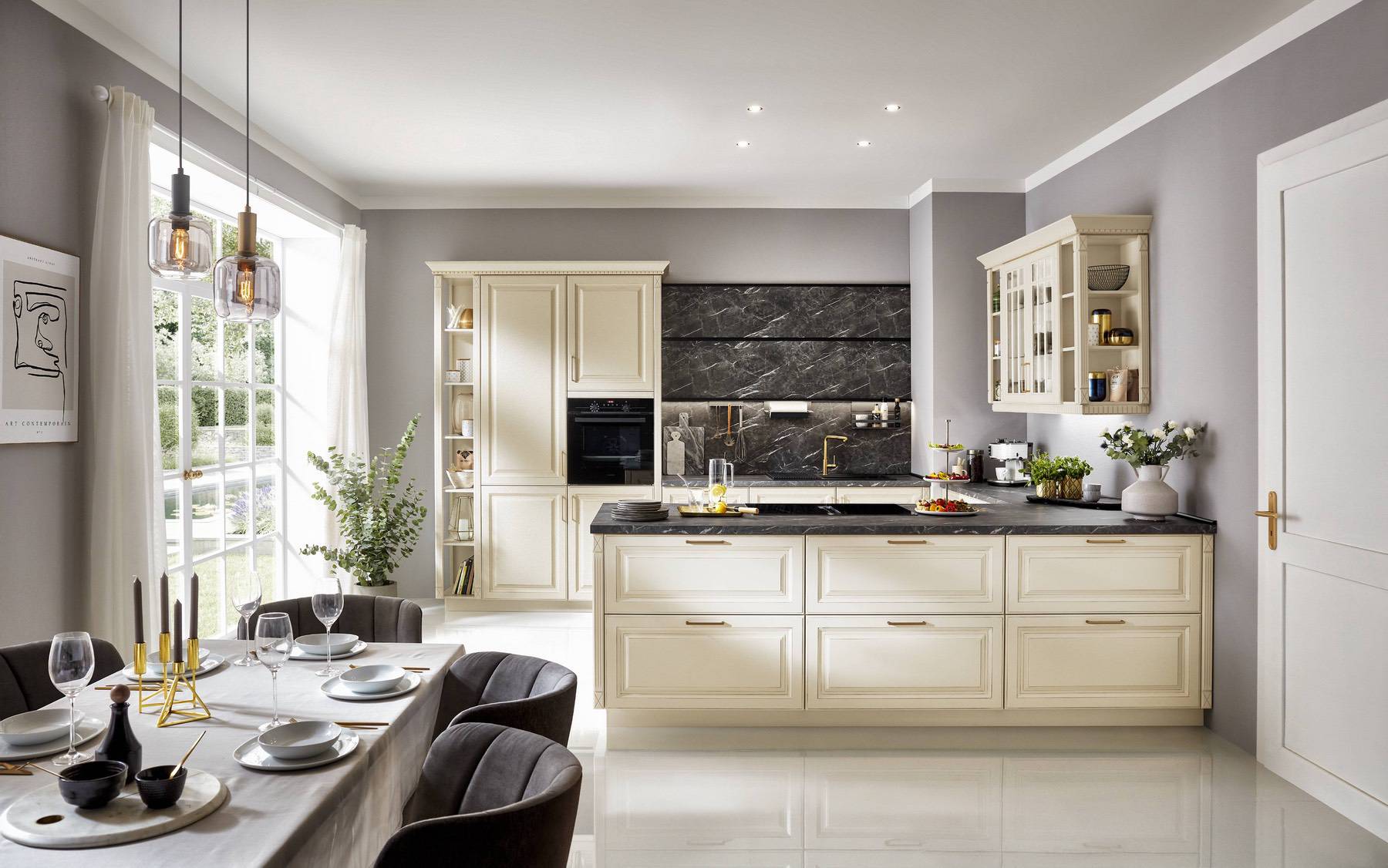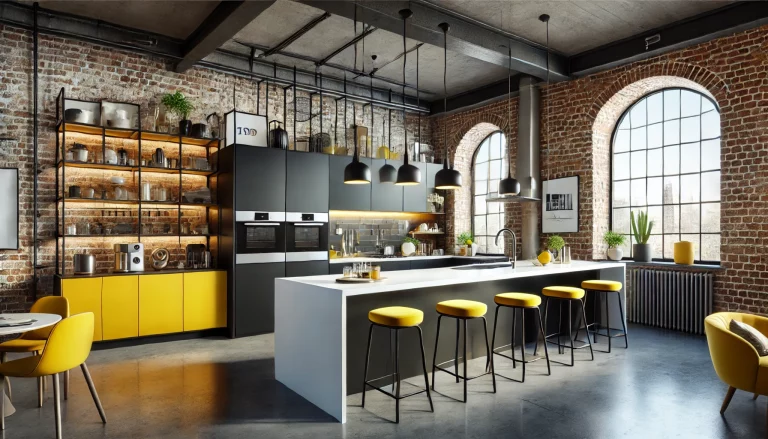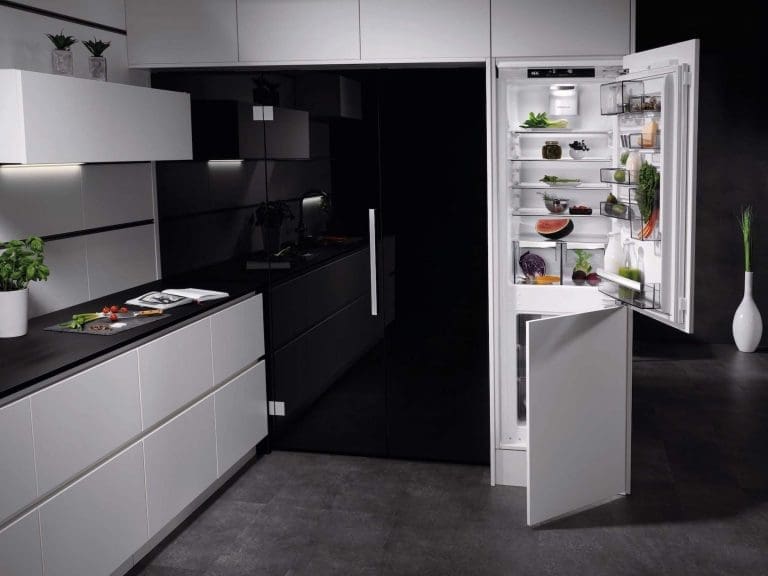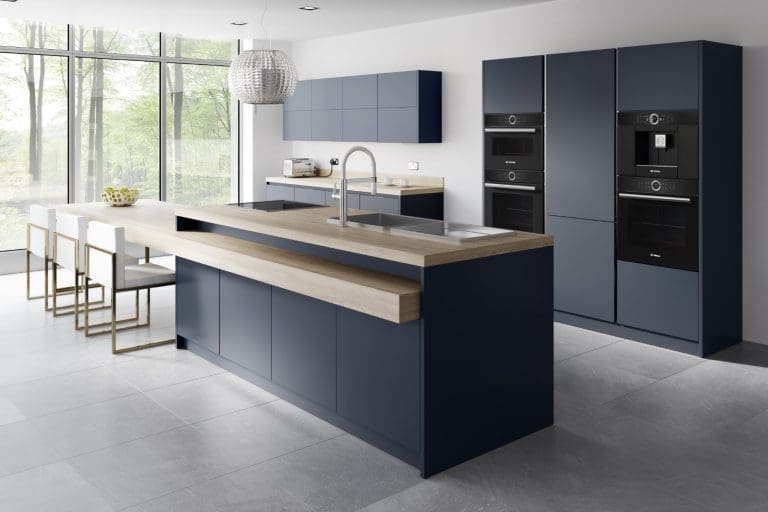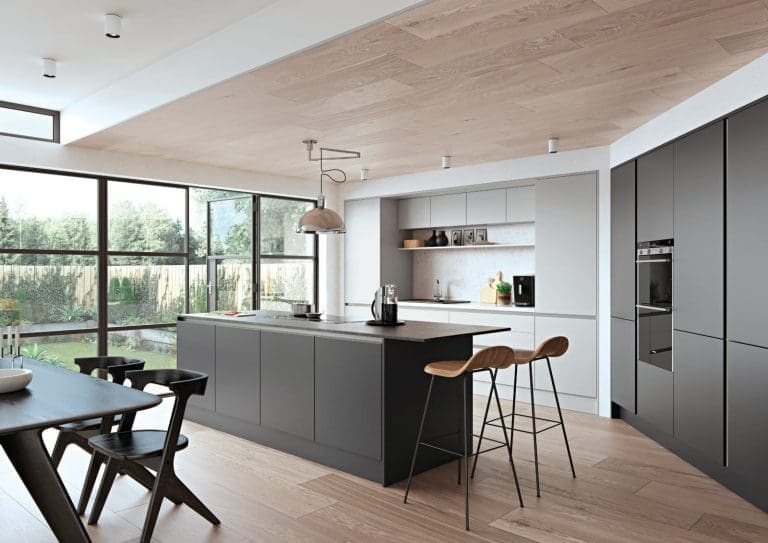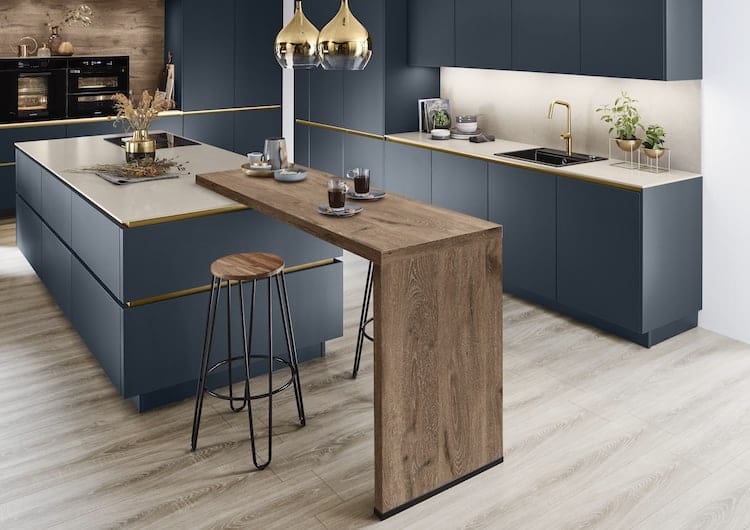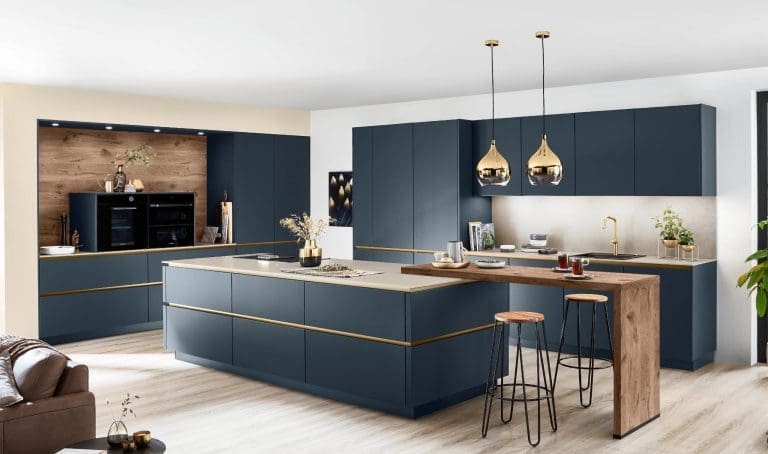The Multi-Generational Kitchen: Expert Design Ideas For When Grandparents Move In
As families adapt to modern living, it’s increasingly common for grandparents to move in with adult children and grandchildren. Whether this is a long-term arrangement or a temporary solution, the kitchen quickly becomes the central space where everyone comes together. But designing a multi-generational kitchen requires careful planning, not only to meet different physical needs but also to create a space where everyone feels comfortable, safe, and included.
If you’re adjusting your home for a three-generation setup, it’s worth thinking beyond wider walkways and lower cupboards. Here, we’ll explore new ways to approach multi-generational kitchen design—ideas that go beyond the obvious and consider real family life. Whether you’re planning a kitchen upgrade or a brand-new installation from scratch, there are plenty of ways in which to create a kitchen that feels right for everyone.
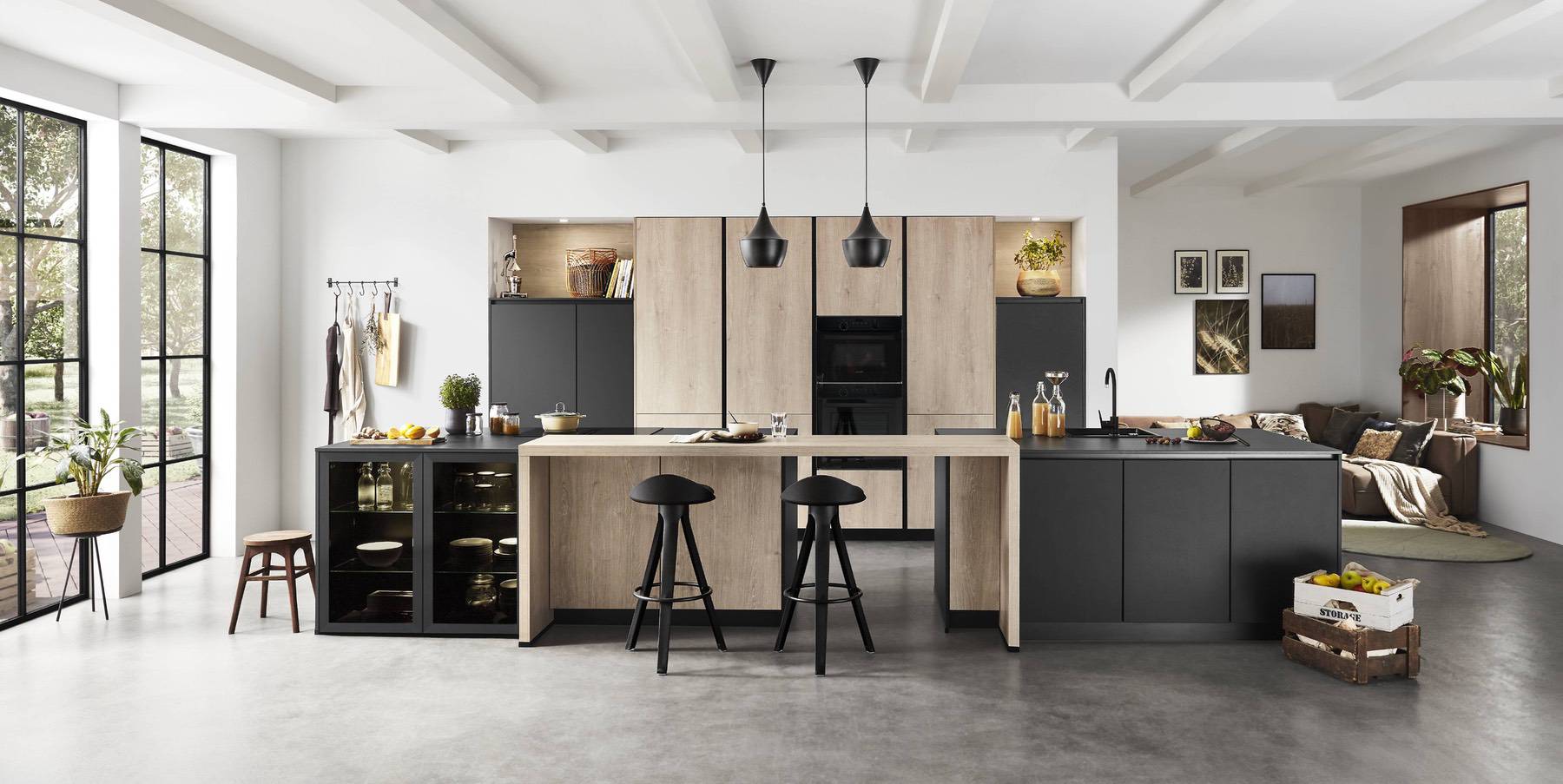
Rethinking the Kitchen’s Role in Shared Living
When grandparents move in, the kitchen becomes far more than a space to cook. It becomes a shared environment for preparing meals, chatting over tea, helping with homework, or even hosting a regular Sunday roast. Designing for multi-generational living isn’t simply about accessibility; it’s about balancing privacy and togetherness, comfort and practicality, familiarity and modern convenience.
In planning your new multi-generational kitchen design, start by asking who uses the kitchen and how. Will a grandparent cook regularly? Do they need a space to sit and supervise rather than participate? Does someone need a perch for taking medication or sorting paperwork while the kids get ready for school? Each of these small moments calls for thoughtful planning.
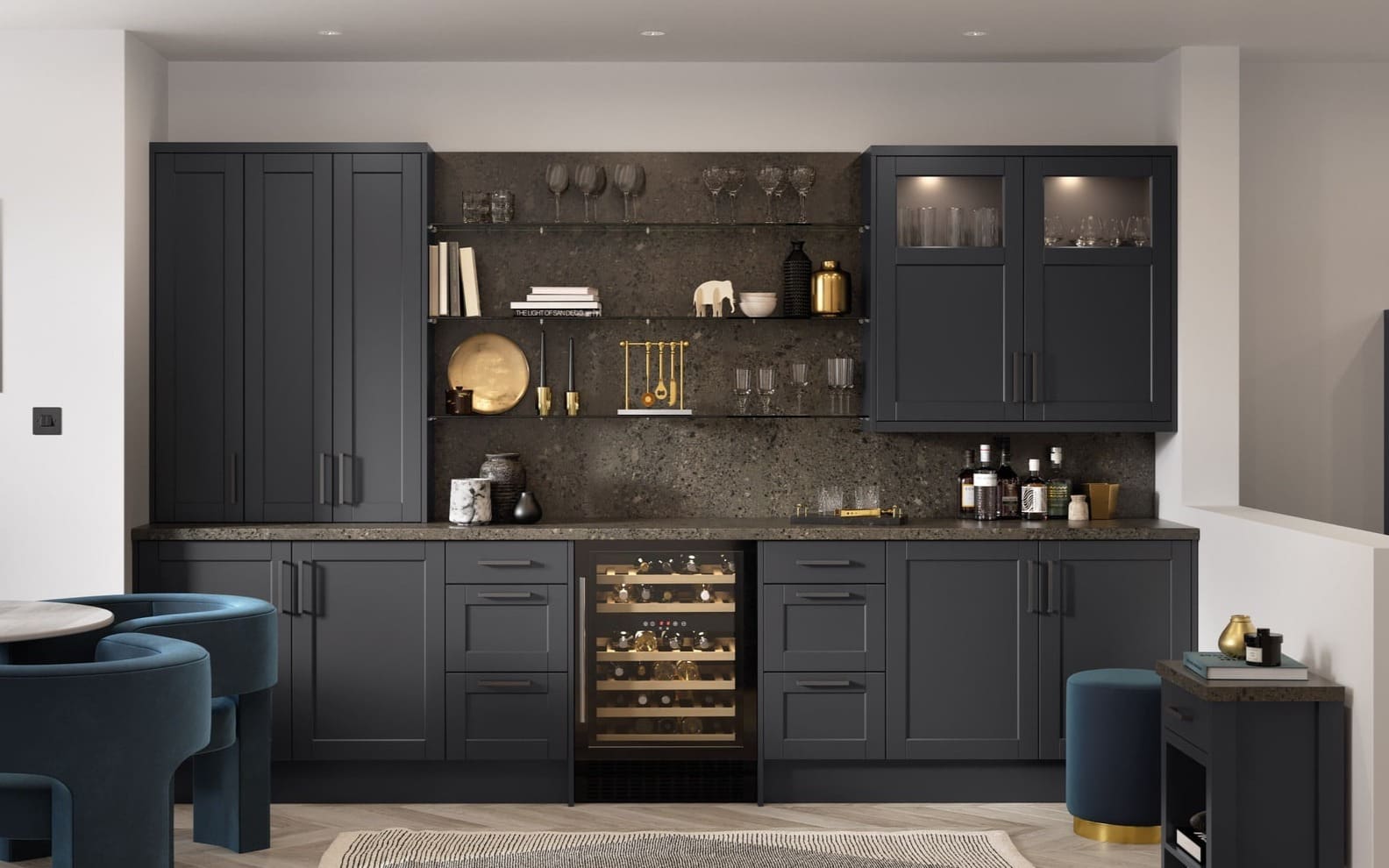
Zoning: Creating Personal Space Within a Shared Kitchen
Kitchen zoning is one of the most effective strategies when planning for different generations under one roof. Rather than separating people by rooms, you can create distinct areas within one kitchen for different activities and energy levels.
Here’s how to approach it:
- Cooking zone: Equip this area with appliances that offer ease of use. Ovens by Miele, AEG, or Kuppersbusch offer slide-and-hide or side-hinged doors for safer access, whilst induction hobs from Novy or Caple are safer and faster than gas, ideal for anyone with slower reflexes.
- Tea-and-toast station: A compact prep area with a kettle, toaster, mugs, and a small sink can make a big difference for an early-rising grandparent who prefers to avoid the morning rush. Add a boiling water tap for convenience and reduce kettle handling.
- Seated supervision space: Add a pull-up seat or perch by the breakfast bar or kitchen island so older family members can stay involved without standing for long periods.
- Children’s corner: A low-level snack drawer and easy-access fridge compartment help children feel included, too, without getting underfoot.
Zoning is also key to creating a family-friendly kitchen layout that adapts throughout the day, giving everyone their moment in the space without feeling pushed aside.
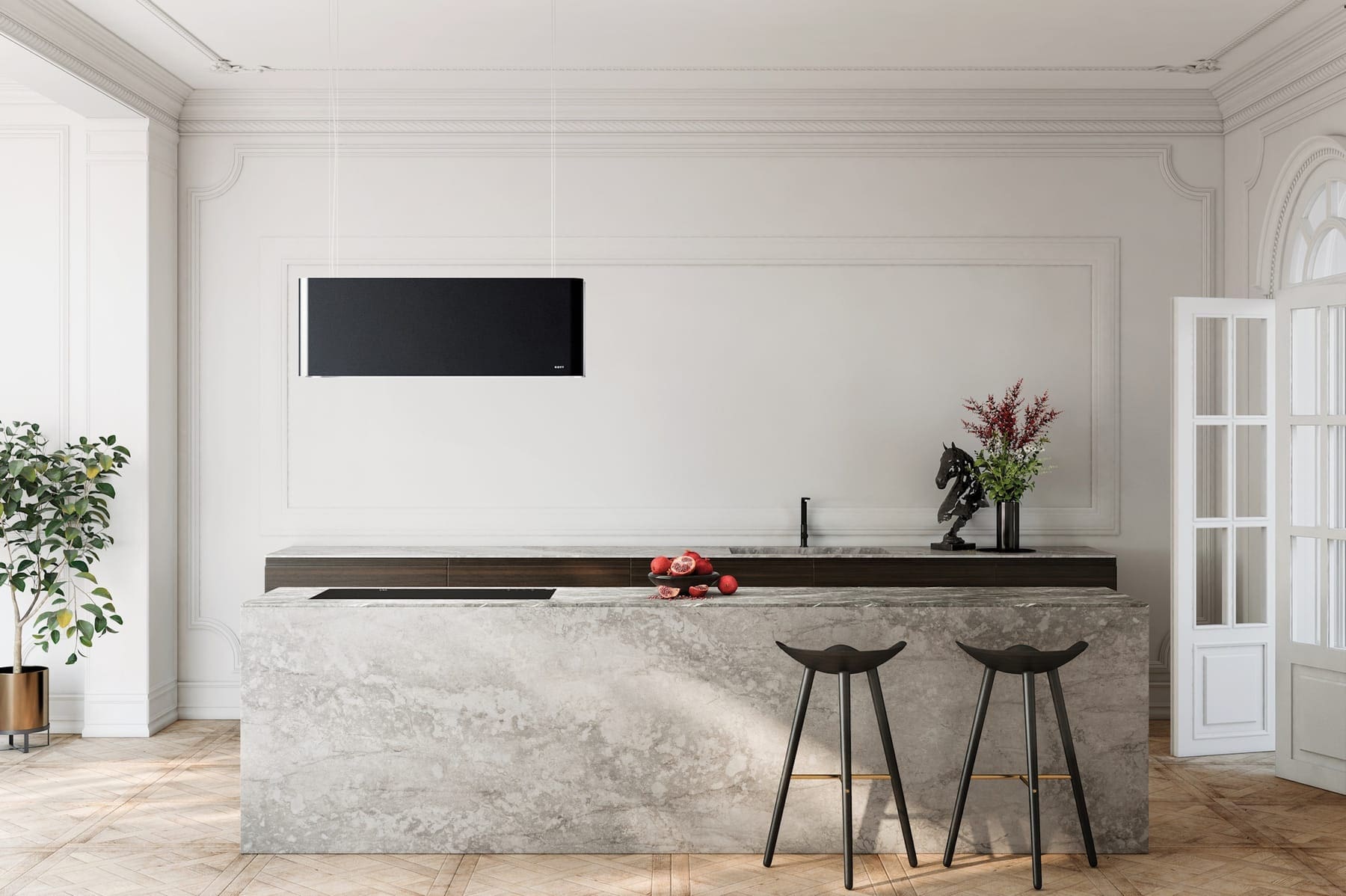
Prioritising Comfort and Mobility for Older Adults
A successful multi-generational kitchen layout considers mobility, visibility, and comfort. While younger adults may prioritise aesthetics and appliance integration, older generations often care more about grip-friendly handles, clear displays, and logical layout. Here are a few useful design ideas for when grandparents move in, which can significantly improve daily kitchen use—making routines more manageable and safe.
- Handleless kitchens can look sleek, but consider grip-friendly profiles if arthritis is a concern. Brands like Bauformat and Nobilia offer ergonomic handle alternatives that blend style with practicality.
- Built-under appliances such as mid-height ovens and dishwashers reduce bending. Consider a raised dishwasher from Smeg or DieDietrich to ease loading and unloading.
- Task lighting is vital. Spotlights under cabinets reduce shadows and help older eyes adjust while preparing food. Combine with ambient lighting for evening comfort.
- Wider walkways between units improve manoeuvrability, especially if using a walking frame. Aim for at least 1000mm clearance where possible.

Classic Meets Contemporary: Blending Styles Across Generations
Kitchen style choices matter. Grandparents may favour warm wood tones or painted shaker finishes, while younger generations might lean towards matt doors or soft industrial textures. But you don’t need to choose one over the other.
With kitchen brands like Brigitte, Omega, or Ashley Ann, you can create a hybrid style. Think shaker doors in a contemporary matt finish, or modern cabinetry softened with timber open shelving. Brands like JJO and Alku offer highly flexible options for combining contemporary elements with traditional touches, so everyone feels at home.
Consider mixing finishes—for example, pair a soft cashmere matt kitchen with a wood-effect island or dresser for an inclusive and balanced look.

Practical Kitchen Storage for Three Generations
A tidy kitchen makes life easier for everyone and helps avoid the frustration of misplacing everyday items, and yet despite its vital role when accommodating multiple generations, storage is often overlooked in shared kitchen design. Here are practical storage ideas worth exploring:
- Pull-out larders: These help older users access items at both top and bottom without overreaching.
- Drawer inserts and dividers: Keep medication, glasses, and specific utensils clearly separated and easy to find.
- Seating storage: A built-in bench with hidden storage can house crafts, toys, or personal essentials, doubling as a cosy breakfast nook.
- Tall pantries: Consider a full-height larder cupboard where everyone has their own shelf, especially if dietary needs vary.
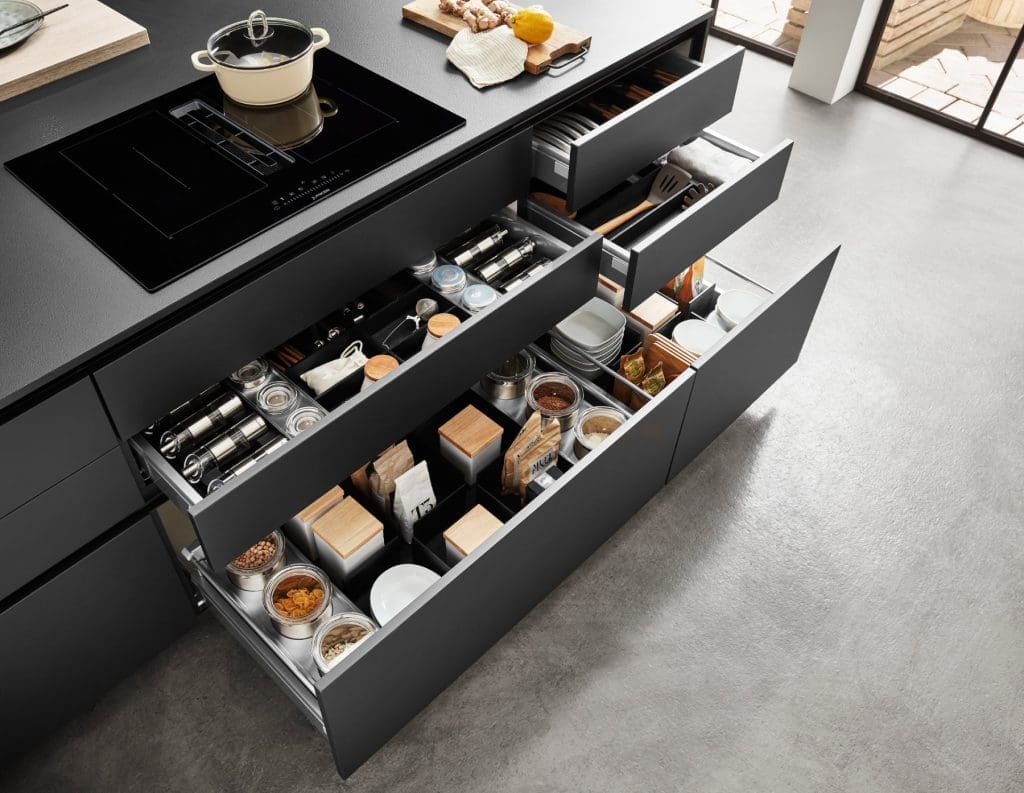
Choosing Kitchen Appliances That Suit Every Generation
When thinking about kitchen appliances for multi-generational households, prioritise simplicity, safety, and smart design. This might include:
- Ovens with auto shut-off features are ideal for those who may get distracted or forget timings. Look to Miele, Smeg, and Kuppersbusch for reliable options.
- Fridge freezers with separate zones allow for personal food preferences. French door or side-by-side models provide easy access for all heights.
- Induction hobs remain cool to the touch, ideal for households with young children and older adults alike. Brands like Novy and Caple offer models with integrated extraction for cleaner lines and less visual clutter.
- Noise-reducing dishwashers let you run the machine at night without disturbing early sleepers.
Don’t forget extractor fans, especially when cooking stronger-smelling dishes. Quiet, effective options from Caple or Novy keep the kitchen fresh without interrupting conversation or TV.
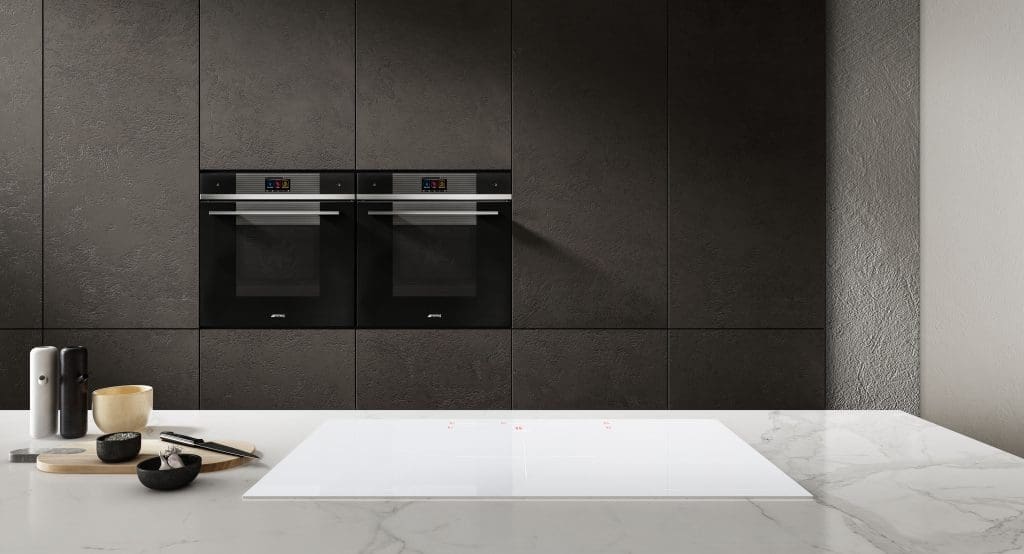
Kitchen Seating That Works for All Ages
In multi-generational family kitchens, flexible seating is key. A fixed-height island bar stool might suit teenagers, but it won’t work for grandparents who need supportive chairs. Instead, opt for a dining area with a mix of options: traditional chairs, a cushioned bench, or an adjustable-height stool with back support.
If space allows, try to include a quiet corner table or a drop-leaf table that folds away. This gives grandparents the option to retreat for peaceful reading or puzzle time away from the main family bustle.
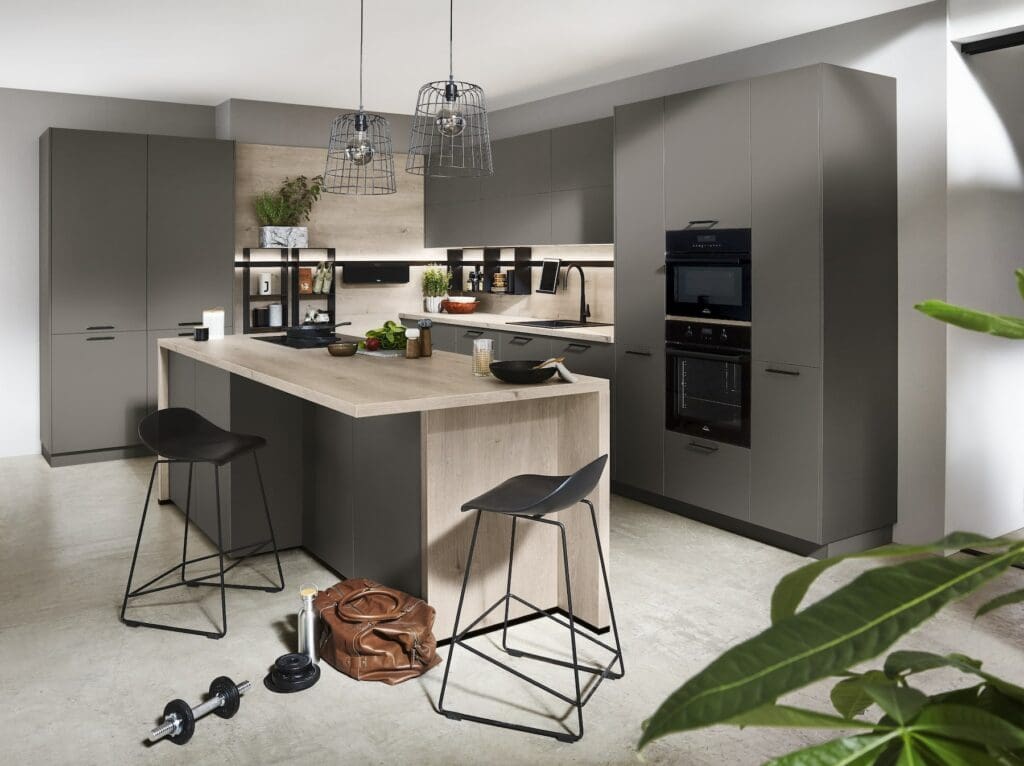
Open Plan vs Broken Plan: What’s Best for You?
Open-plan kitchens remain popular, but they’re not always ideal for multi-generational households. Too much openness can lead to noise, mess visibility, and sensory overwhelm. An increasingly popular solution is the broken-plan kitchen—a layout with subtle divides. Half-walls, open shelving, or even a sliding glass panel can separate spaces without total isolation. This design gives older residents a way to be nearby without being overwhelmed, while still keeping sightlines open enough for communication.
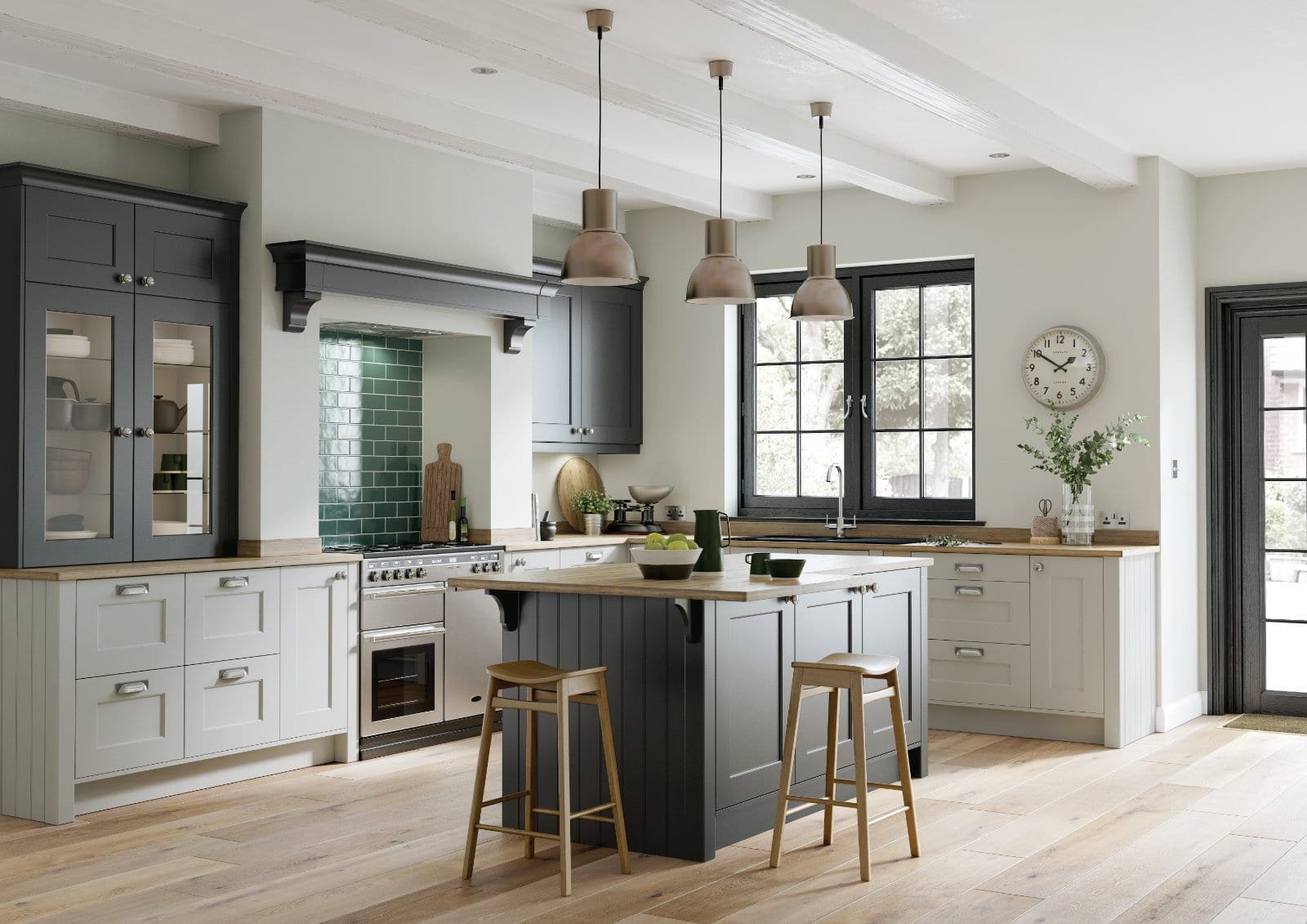
Thoughtful Touches for a Harmonious Space
It’s the little details that often make the biggest difference in a multi-generational kitchen layout. The following practical features can help turn a visually stunning kitchen into a space that’s truly functional for all:
- Soft-close doors prevent accidental slams.
- Non-slip flooring reduces the risk of falls—go for textured laminate or LVT.
- Rounded edges on worktops and handles lower the risk of bumps and scrapes.
- Wall-mounted tablets or smart displays can centralise shopping lists, medication reminders, or family schedules in a shared and accessible spot.
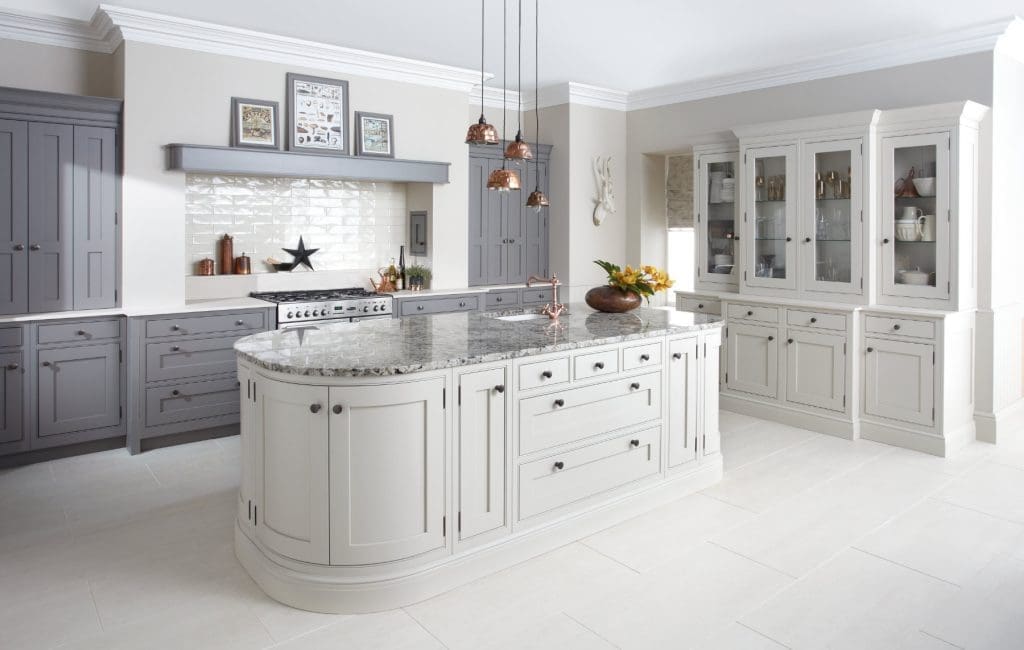
Final Thoughts: Designing a Kitchen That Works for Every Generation
A well-designed kitchen supports independence, togetherness, and daily function for all members of the household. When grandparents move in, it’s a chance to reassess how your space works and evolve it into something more thoughtful.
Multi-generational kitchen design isn’t about compromise—it’s about adaptability. With the right layout, materials, appliances, and design features, your kitchen can become a comfortable and welcoming environment for all generations under one roof.
Take time to explore options, visit a local kitchen showroom, and speak to experts who understand the demands of real family life and will help you achieve the perfect multi-generational design.
